Make Your Podcast Stand Out with Audio Branding
You have the opportunity to use your voice and your music selection to establish an audio brand for your podcast from the very first word. Most podcasters create a standard intro and outro for each episode that’s laid with music. But why? Listeners need immediate confirmation that they’ve hit the right button and selected the ‘right’ show.
So, if they’re a long-time listener, they’ll be soothed by the familiarity of your music and your first few routine phrases.
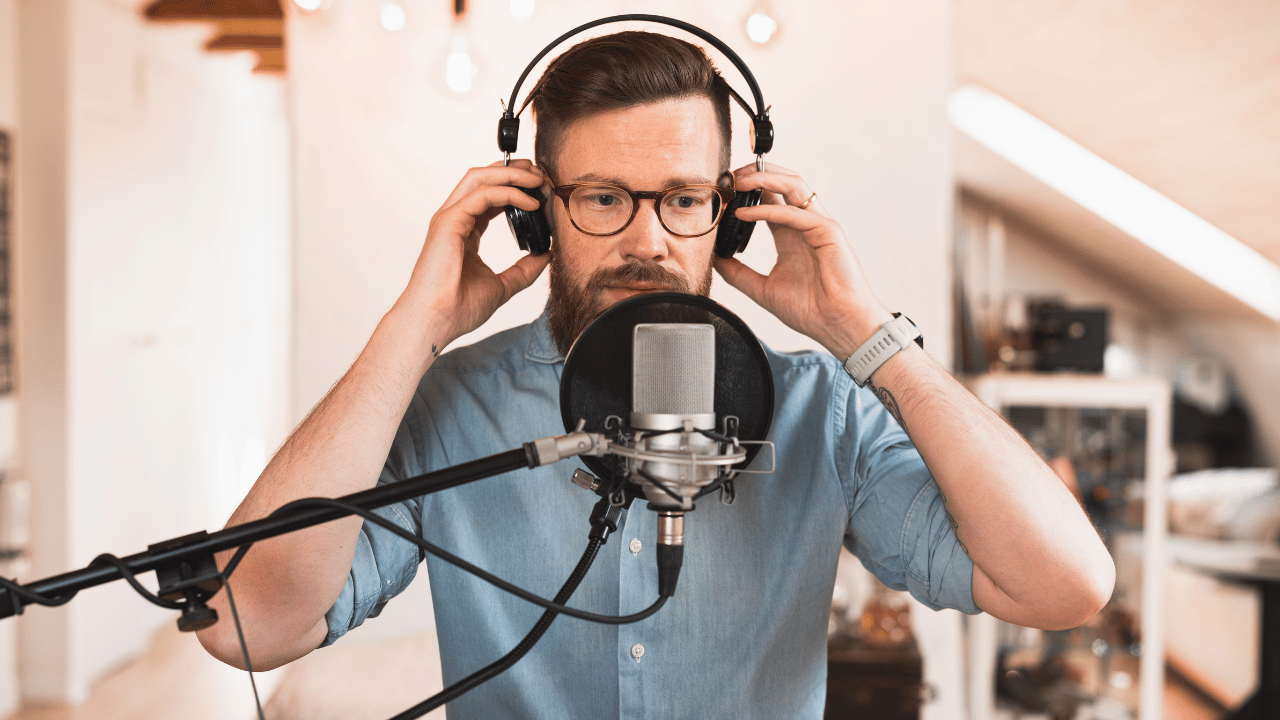
Humans love their comfort zones, and since the latest data shows that 60% of podcast listeners integrate their favorite shows into their daily routine, they’re looking for your recognizable audio cue to help them navigate through their workout, household chores, commute, or morning routine.
If they’re a new listener, their consumption of your audio branding within the first minute of your show has the power to make or break the relationship. I know that’s harsh, but this is a GOOD thing!
As a podcast host, you’re in control of using your voice, words, and music selection to create a recognizable, distinct audio brand that attracts potential customers and raving fans while simultaneously repelling everyone else.
In this article, we’ll dive a little deeper into audio branding so you can learn HOW to make audio branding a key component of your podcast.

As you read this article, think of audio branding like a visual logo. Instead of your logo being a carefully crafted image with meaningful colors and shapes, it’s now in audio form – an audio logo – and comprised of sound, inflection details within your voice, a specific cadence, and music.
Audio branding isn’t just important for the big names with 100K downloads or corporations like Intel (hear their tell-tale sound signature in your head right now?), and it doesn’t have to cost hundreds or thousands of dollars.
Audio branding is just a way to convey your message to your audience and share who you are and what your business or brand is about. This brings me to my first important question: When listeners hear your audio branding, how do you want them to feel?
Why Your Intro & Outro Are So Important
There are three central ways that your intro and outro are integral to your audio brand.
-
The intro quickly gives listeners an idea of what your show is about and how to connect with you. You can infuse your personality into your intro so potential listeners can quickly decide whether they’ll enjoy your perspective and style.
-
Your intro is the connection point. Listeners decide within the first minute of your show whether they’ll continue listening or not. Design your intro so that potential listeners are interested to hear what you’ll say next. Aim to connect with your tribe and attract your soon-to-be biggest fans.
-
Your intro and outro make you memorable to listeners. Your voice, the music you use, and even key phrases you say make you distinctive — and listeners love to feel they have a relationship with you where they know what’s coming.
How Audio Branding Works
The International Sound Awards defines audio branding as a brand sound that represents the identity and values of a brand distinctively. They’re sonic logos, and big brands use them all the time, on podcasts, on video or TV, and in audio ads.
You should intentionally create your audio branding in response to two things:
-
Who you are
-
Who you want to attract
Finding Your Brand Identity
Think about who your customer avatar is and what kind of people you want to listen to your show. Who are you trying to serve, and what do you think they would like to hear on your podcast?
For example, you wouldn’t make the same musical choices for a true crime podcast as you would for a show about entrepreneurship or investing. You also wouldn’t include sarcasm in a podcast intended for children. So, your potential consumers’ preferences, age, lifestyle, and education matters when it comes to choosing and creating audio branding elements.
Consider how your ideal audience aligns with the core of who you are. Aim to arrive at the intersection of those two points to create your audio brand. Whether you’re podcasting because it’s your passion or you’re a company creating purchase intent, your audio branding plays a key role in the discovery, retention, and growth of your podcast.
Intentional sound design will inspire consumers on a subconscious and emotional level. Find examples in nearly every commercial – know the Mazda tune? Sing it with me: Zoom, zoom, zoom. And what do you think of when you hum that tune? Fun, right? Zooming along, navigating curves with ease while the wind blows through your hair.
Hmm. Those sound designers did their jobs well.
For decades, companies have perfected the art of creating purchase intent by basically getting a song, tune, or sound (with or without words) stuck in your head. This audio branding technique creates brand recognition and recall in consumers, whether or not they are direct consumers of your products or services.
The good news? You and your editor can do this without attending board meetings or breaking the bank!
Intentionally Designing Your Audio Logo
Your podcast and your business sound set you apart from other podcasts in the same niche. Everyone has something unique that makes their message and perspective stand out, and you can demonstrate this quickly and powerfully with sound. Your podcast’s audio branding can reflect your professionalism, comedic background, or even the visual you hope to create in your listeners’ minds.
No matter how important or impactful your message is, listeners won’t stick around if your audio quality is terrible. Part of what will make your audio brand distinctive is the recording quality of your sound. There are a few cost-efficient steps you can take to ensure your audio recordings are the highest-quality possible.
-
Record in a quiet and sound-treated environment with fewer hard surfaces and lower ceilings. Use fabric items like towels, blankets, and curtains, to reduce the potential for reverb from hard surfaces. Related article: How To Reduce Background Noise From Your In-Home Studio
-
Don’t record near glass, hardwood, or in the middle of a large room that echoes— kitchens, bathrooms, and rooms with vaulted ceilings are generally poor recording environments.
-
Use a separate mic designed for spoken word. Don’t rely on the poor quality of your computer’s built-in microphone. It won’t turn out the way you want.
-
If conducting an online or remote recording, your internet connection significantly impacts your sound quality. Use a wired connection rather than Wifi. Related article: Three Simple Ways to Get Great Audio Quality from an Online Recording Environment
-
Wear headphones to listen to all co-hosts, interviewees, or guests. Furthermore, require them to wear headphones or earbuds too! This will prevent each person’s microphone from picking up any sound from the other attendees like what would occur if you were using your computer’s speakers to play their audio out loud.
Run a couple of sound tests and experiment before you release anything. It’s critical to make sure your podcast product sounds pleasing – for branding purposes and for the listener experience. The consistent production of professional sound will only further support your audio branding mission, solidify your audio logo, and make your podcast stand out as a superior audio brand.
Using Music in Your Audio Branding
Music is a great way to reach your audience on a deeper, more emotional level, and there are several ways to find the right piece of music for your show.
-
You can use a royalty-free music directory like the YouTube Audio Library, Take Tones, or Josh Woodward to find a song: This is a great way to access music for your show, but it does have a downside — those sites feature music that anyone can use. And if other podcasters are using the same musical choices in their audio branding, it doesn’t create an effective audio logo for either of you.
-
There are also low-cost music sites that sell licensed downloads of their music for use in audio and video production. Audio Jungle, Sound Stripe, and Neo Sounds are a few of your options. Again, anyone can purchase the same sounds as you, so your brand’s success hinges on your ability to pick unique music.
-
A third option is to have unique music created for your show. You can hire a musician to create music that aligns with your brand values and that you know will be the right fit for your target audience.
Finding a sound that matches your company’s personality is a great way to enhance your brand identity and establish the perfect audio logo.
Inspiring Consumers with Your Audio Brand
How can you inspire your listeners with audio branding? It seems like kind of a tall order, but what it comes down to is just turning sound waves into emotion.
Consider the emotions that you mean to evoke with your podcast or your topic. Take it back a step and look at your podcast visuals — what are you trying to convey with your podcast art? What feeling are you trying to inspire in your customers? Your sonic logos play as big a part as your visuals in building a cohesive brand identity.
Attracting and Engaging Listeners
During each part of the scripting, recording, and editing process, remember that your audio branding works to attract prospective listeners to the show and keep them engaged.
Attempt to embed that brand identity into every aspect of your show. Establish consistency by using a signature phrase or through a consistent sequence of segments throughout your episodes. Perhaps your intro always begins with an inspiring quote and ends with a call to action. Or maybe your outro is short and sweet with a 15-second suggestion of how the listener can apply what they heard in your episode.
People will subconsciously begin to expect the sound elements of your audio branding – your song, voice, and sound effects – each time they hit Play. Your music selection plays a key role here in that it should be a sound that you enjoy, that resonates with your intended listeners, and that sets the tone for the message you and your brand represent.
Using a Professional to Create and Edit Your Intros and Outros
Whether you prefer to produce your intro and outro yourself depends on your sound design knowledge, your voice confidence, and your music selection abilities.
If your voice is part of your audio branding (it is for most podcasters), then it makes sense for you to record your intro and your outro, and often any audio ads or other elements intended to boost consumers’ purchase intent.
The most attractive feature of your brand is YOU.
So, don’t be afraid to use your own voice as part of your audio branding, especially if your podcast represents your small business. When you as an individual connect with your target audience, they begin to feel like they are “close” to you. This is where the magic happens – your consistent audio branding can lead to trust, more engagement, and, eventually, sales of your services and products.
Podcasts whose intro and outro are pre-recorded by a voice actor or actress can appear inauthentic to potential customers (a mistake I made back when I launched my own podcast many years ago). When you’re deciding whether to hire a voice actor or not, think about whether your voice is an integral part of your audio branding or whether the focus is elsewhere.
The easiest way to answer this is to ask yourself: Am I the face of my company? or Do I want to be the face/voice of my company?
If perhaps, you’re one of many employees charged with creating a podcast to represent a large brand or company, then it’s likely you’re not really expected to become the voice of the brand. In this case, finding a voiceover specialist to provide the audio elements you need is reasonable.
Either way, I suggest using a professional audio editor to mix and master the sound. Although I’m sure you could wing it with a couple of how-to YouTube videos, it’s not recommended since your entire audio brand hinges on creating this unique audio signature.
Make Your Podcast Stand Out By Creating Your Own Audio Branding Today
If you really want to make a splash with your podcast, then it’s important you take the time to intentionally design, record, and master your audio branding. Again, your audio brand can be made up of music, sound effects, and your or someone else’s voice.
Audio branding doesn’t have to be time-consuming or expensive, you just need to be intentional about creating a sound that reflects who you are, beginning with the first 30 seconds and the last 15 seconds of your show.
Draft your intro: Begin by writing 3-4 sentences introducing yourself (and any co-hosts if necessary), what your show is all about, and what listeners will glean from each episode (this is a great place for your podcast’s hook!). Listeners prefer shorter intros, so aim to keep your spoken intro between 10 seconds and 1 minute.
Draft your outro: Begin by writing 2-3 sentences letting listeners know where to connect with you further (Instagram, website, etc.) and reassure them you’ll be back soon with more. This is a great place to say, “Tune in again next week!” for example, if you’re producing a weekly episode.
Any other information like calls to action, details about your business, services or products that align with the episode topic, and guest bios should be woven into the body of the episode or recorded separately as an ad spot.
Get started on the above two audio branding action steps today. After you’ve refined these few sentences to hook potential consumers in and inspire them to keep listening, make a music selection.
Key elements of audio branding include music and voice. Vocal inflections, tone, and the cadence of spoken words as they flow with your musical choices all work cohesively to create your audio logo. Audio branding, when done well, becomes an integral, easily recognized part of your business brand, perhaps even more so than the graphic logo you’re so accustomed to.
For further guidance in creating your audio brand and making your podcast dreams come true, book a free consult with me today.
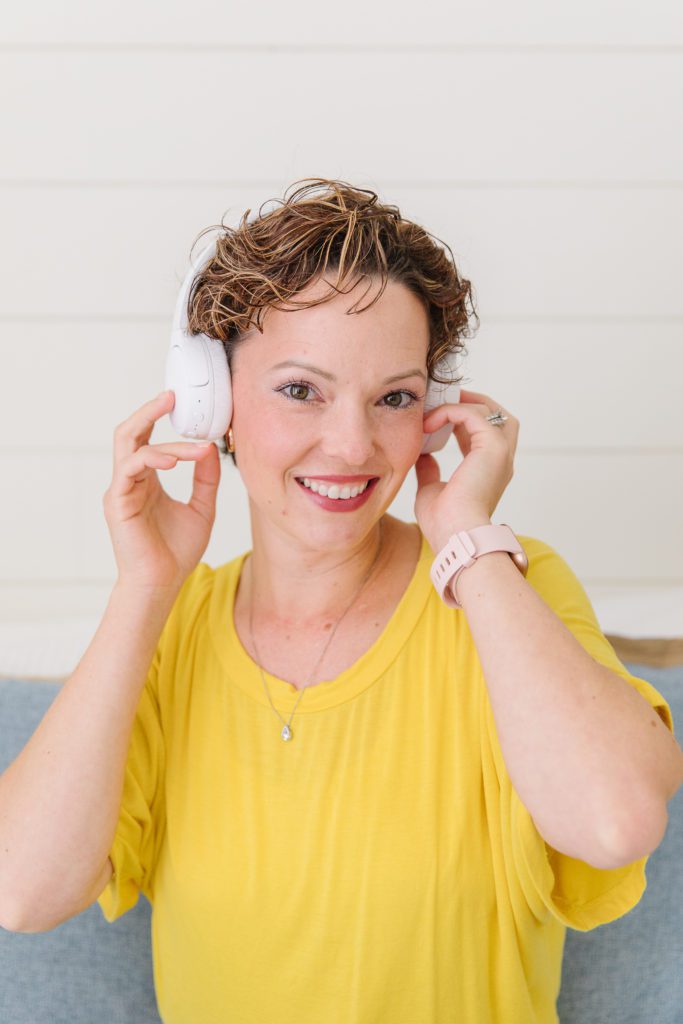
Written by Virginia Elder
More From This Category
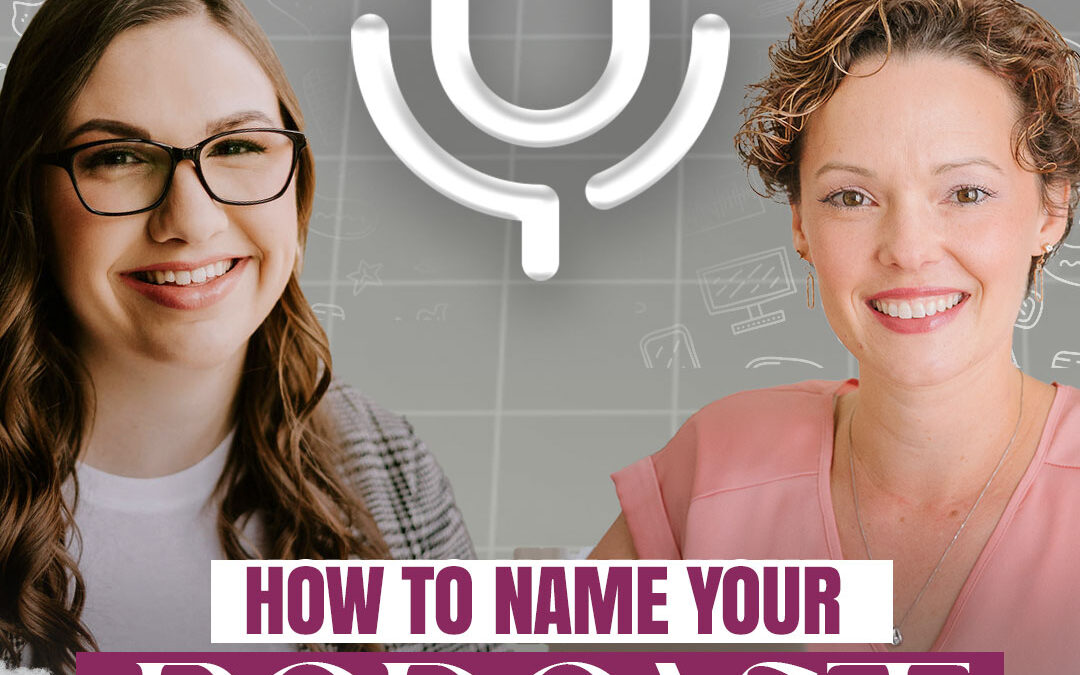
How to Name Your Podcast: Identify the Gap in Your Industry | Bri Conn | Ep 54
What if you niched down so far that you only served a very specific, small sub-set of the population? That’s exactly what Jay Zigmont and Bri Conn did when they established the Childfree Wealth® podcast and brand. Both of them saw a gap in the traditional CFP...
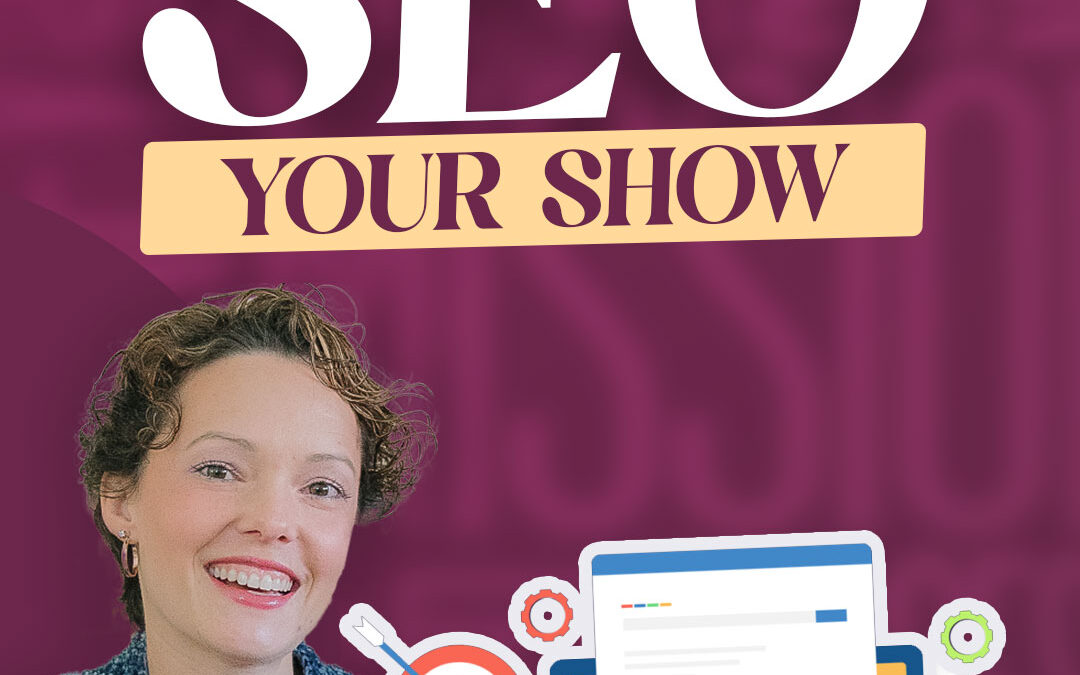
How To SEO Your Show: Making It Easy for Ideal Clients to Find Your Podcast | Ep 52
Learn the exact SEO strategies we use to help our podcast clients get found. You’ll find out how to tweak the written content around your podcast to make any algorithm display your content to your potential clients. Listen for tips to create the best titles, include...
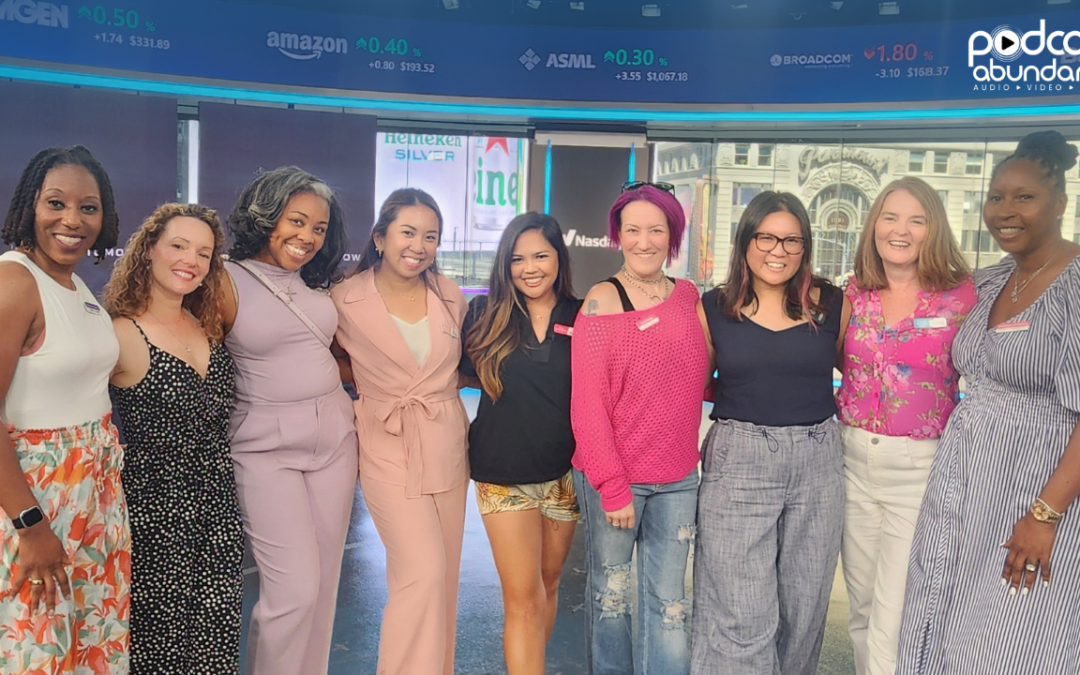
Podcasting: A Powerful Post-Conference Follow-Up Tool
SUMMARY: Podcasting is a great way to follow up with people you meet at conferences. By creating podcast episodes about conference topics and sharing them with your new contacts, you can stay connected, build trust, and turn those connections into clients. Watch the...
0 Comments
Affiliate Disclosure: Happy Healthy Abundance, LLC dba Podcast Abundance is a participant in affiliate link programs and may accept payment from sponsors as a way to provide you with products, courses, and programs that I love, and may include items from Amazon and any other programs or products I believe will provide benefit you. Affiliate links are located throughout this website. The links provide a small percentage of commission to Happy Healthy Abundance at no additional cost to you. Affiliates and Sponsors have been carefully selected with integrity and I’ll never promote anything or accept sponsorship for a product or course or from a company that I don’t believe will actually improve your life and help you in your journey toward abundance.

0 Comments